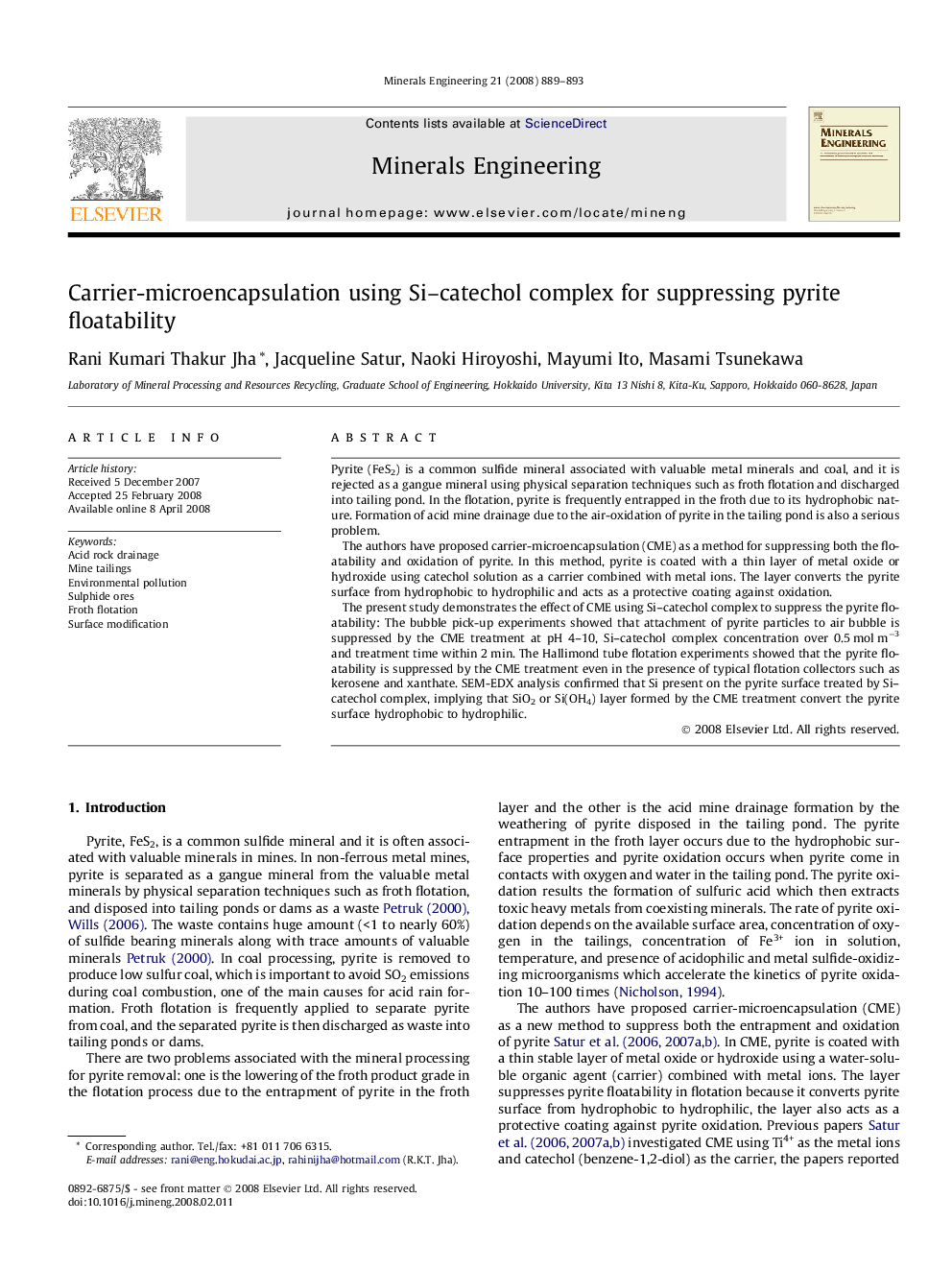| Article ID | Journal | Published Year | Pages | File Type |
|---|---|---|---|---|
| 234606 | Minerals Engineering | 2008 | 5 Pages |
Pyrite (FeS2) is a common sulfide mineral associated with valuable metal minerals and coal, and it is rejected as a gangue mineral using physical separation techniques such as froth flotation and discharged into tailing pond. In the flotation, pyrite is frequently entrapped in the froth due to its hydrophobic nature. Formation of acid mine drainage due to the air-oxidation of pyrite in the tailing pond is also a serious problem.The authors have proposed carrier-microencapsulation (CME) as a method for suppressing both the floatability and oxidation of pyrite. In this method, pyrite is coated with a thin layer of metal oxide or hydroxide using catechol solution as a carrier combined with metal ions. The layer converts the pyrite surface from hydrophobic to hydrophilic and acts as a protective coating against oxidation.The present study demonstrates the effect of CME using Si–catechol complex to suppress the pyrite floatability: The bubble pick-up experiments showed that attachment of pyrite particles to air bubble is suppressed by the CME treatment at pH 4–10, Si–catechol complex concentration over 0.5 mol m−3 and treatment time within 2 min. The Hallimond tube flotation experiments showed that the pyrite floatability is suppressed by the CME treatment even in the presence of typical flotation collectors such as kerosene and xanthate. SEM-EDX analysis confirmed that Si present on the pyrite surface treated by Si–catechol complex, implying that SiO2 or Si(OH4) layer formed by the CME treatment convert the pyrite surface hydrophobic to hydrophilic.
